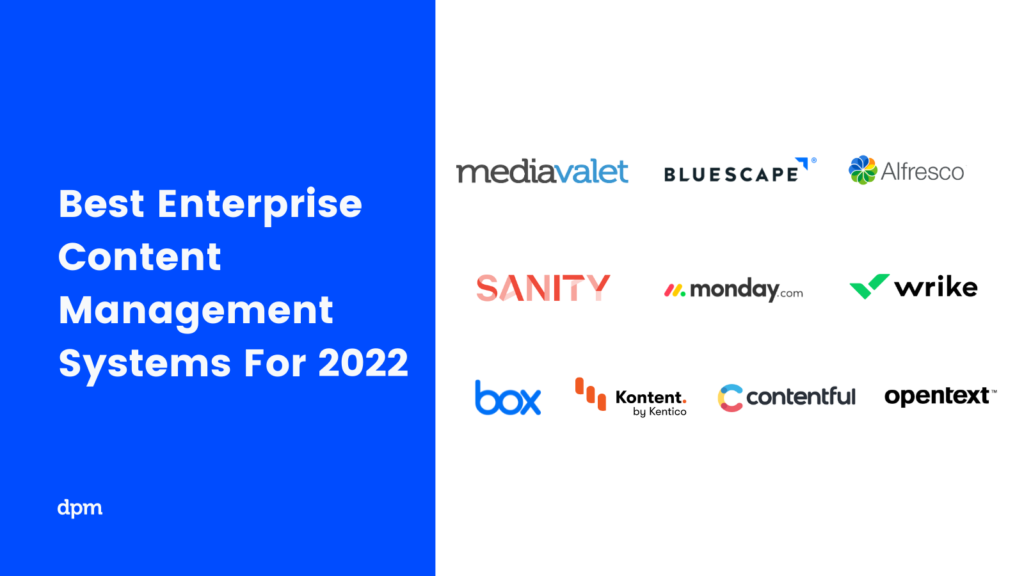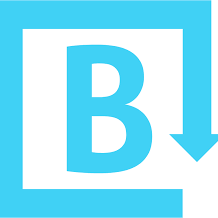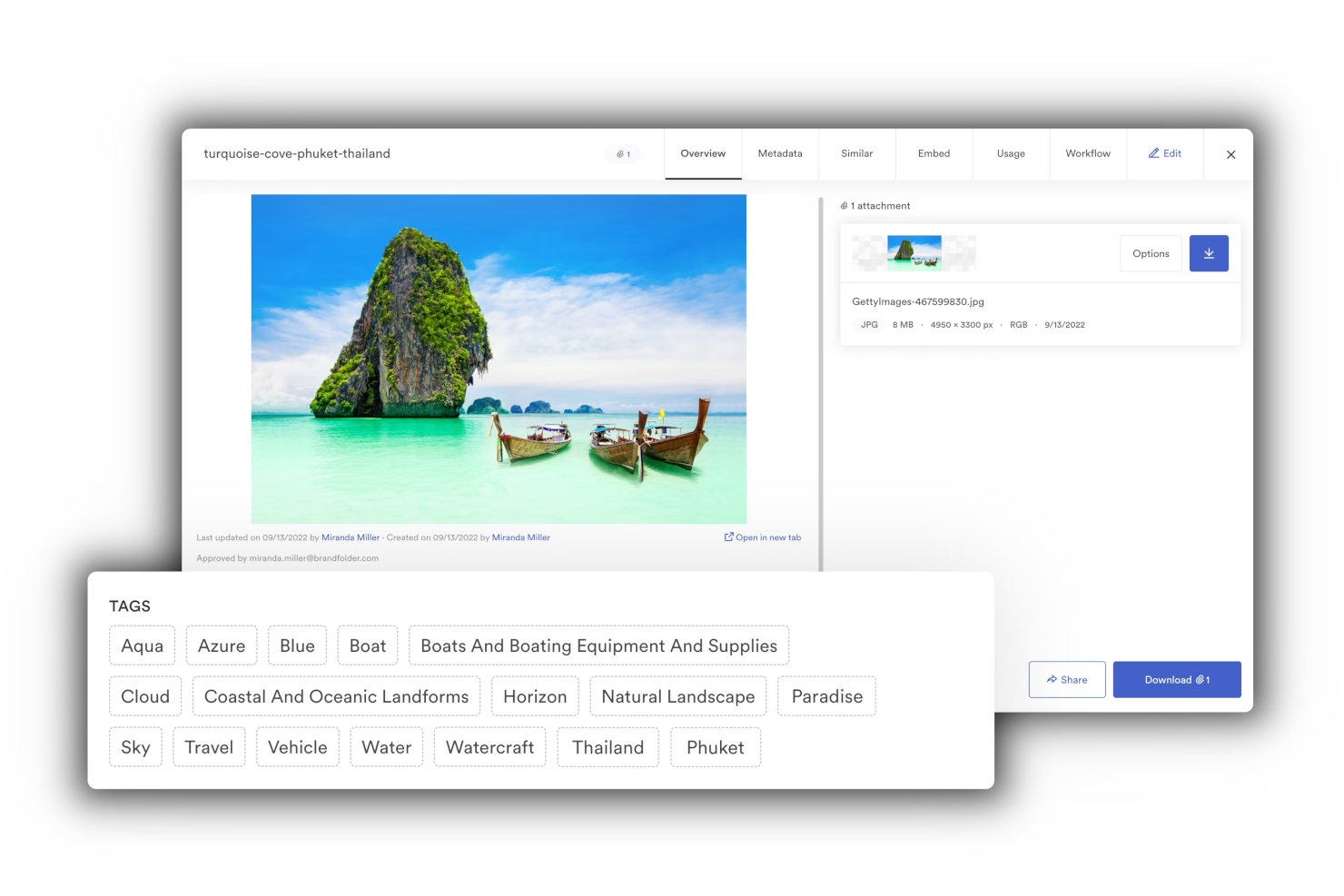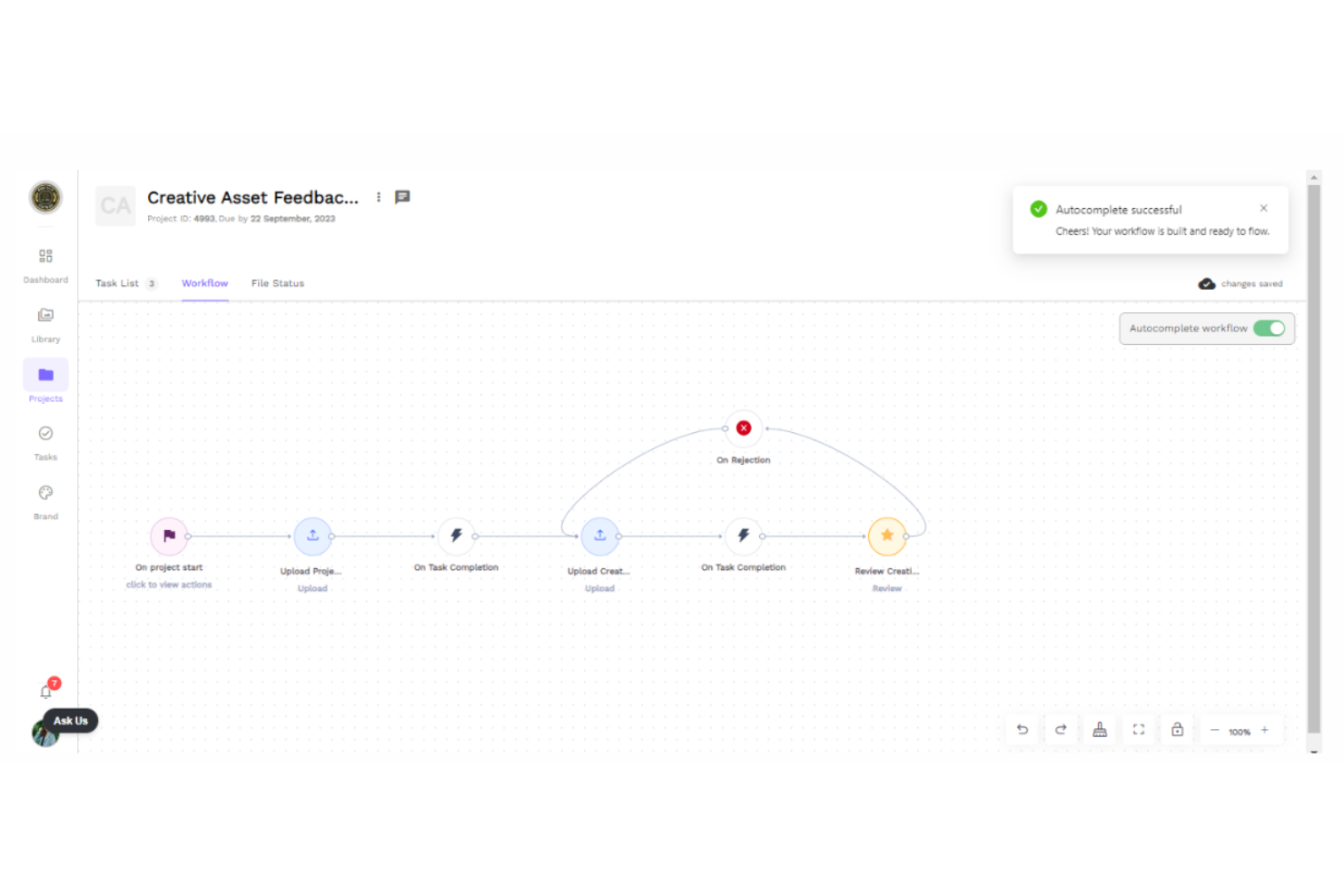10 Best Enterprise Content Management Systems Shortlist
Here's my pick of the 10 best software from the 10 tools reviewed.
Get free help from our project management software advisors to find your match.
With so many different enterprise content management systems available, figuring out which is right for you is tough. You know you want to improve business processes by managing the flow of information effectively but need to figure out which tool is best. I've got you! In this post I'll help make your choice easy, sharing my personal experiences using dozens of different content management tools with various teams and projects, with my picks of the best enterprise content management systems.
What Is An Enterprise Content Management System?
Enterprise content management systems (ECM) are tools that manage an organization's information and documents. They handle various forms of content, from documents to images and emails, organizing and storing them digitally. ECM systems streamline the process of capturing, storing, accessing, and managing enterprise information.
The benefits of ECM systems include enhanced efficiency in managing large volumes of content, improved compliance with data management regulations, and facilitated collaboration among team members. They aid in decision-making by providing quick access to relevant information, reduce paper-related costs, and secure sensitive data, adapting to the evolving needs of a business.
Overviews Of The 10 Best Enterprise Content Management Systems
Here’s a brief description of each enterprise content management solution to showcase each tool’s best use case, some noteworthy features, and screenshots to give a snapshot of the interface.
MediaValet is a cloud-based digital asset and document management system. It stores all your documents and media securely while allowing relevant people across your organization to access the files they need. You can use the platform for marketing resources, sales content, multimedia, and other business documents.
The powerful search engine makes the tool stand out. AI image and text recognition ensure people can always discover the types of content they require. And it’s easy for searchers to filter and customize the results page to find what they need. For example, you can narrow results by file type or uploader.
MediaValet has a powerful permissions engine, so those in charge have complete control over what each employee can see. This means you can work on new campaigns within the tool without the risk of related documents leaking.
Microsoft Office integration is another helpful feature. It streamlines content production workflows by letting you open and edit documents within the platform. The tool also integrates with Slack, Adobe Creative Cloud, WordPress, and other collaboration and content creation tools.
Each MediaValet pricing plan offers unlimited users and support. But the cost depends on storage, integration, and platform needs. Contact the company for a quote to find out more.
Brightspot helps companies manage their digital content. It is an enterprise content management system that provides users with a comprehensive suite of tools to create, edit, store, and distribute content. The software enables organizations to quickly create and deploy engaging digital experiences for their customers.
Brightspot has an intuitive dashboard that makes it easy to organize, track, and publish content. You can use the platform to customize the look and feel of your websites and blogs and create custom landing pages or other marketing materials. Brightspot provides detailed analytics and reporting capabilities that allow users to track performance metrics such as page views and unique visitors over time. Its analytics dashboard allows you to view reports filtered by date range or geographic location, making it easy to analyze performance at a granular level.
Additionally, it offers workflow automation capabilities that allow multiple users to collaborate on projects. You can assign tasks, set deadlines, receive notifications about task progress, and comment on drafts from one centralized place. This makes it easier for teams to stay organized and ensure every task is completed on time.
Brightspot has built-in features for versioning content, so you can quickly revert to an earlier version if needed. Its intuitive content editing interface makes it easy to create, manage and publish content quickly. The interface includes a rich text editor with support for WYSIWYG formatting, and drag-and-drop functionality to upload images and other media files. You can preview your work before publishing changes live on their site or app, ensuring accuracy and saving time by avoiding the need to re-edit after publication.
Integrations include Adobe Stock, AP Images, Apple News, AWS Elemental, Coral, Getty Images, FB, Google Drive, Hubspot, Marketo, and Shopify.
Brandfolder is a cloud-based digital asset management (DAM) platform with powerful enterprise content management (ECM) solutions.
It is designed for enterprise usability, allowing creatives and marketing professionals to manage and distribute all their digital assets efficiently while getting a better understanding of their performance. The platform offers multiple processes to facilitate the organization, storage, and retrieval of media assets as well as the management of digital rights and permissions. It can be customized to serve the unique requirements of businesses in different sectors, including retail, technology, and sports.
Brandfolder is equipped with a centralized storage facility, referred to within the platform as ingesting and storing. Businesses and enterprises can use it to store all their branded assets. They can upload, organize, share, and store an unlimited number of digital assets and files, all from a secure location. An admin can set the permissions so internal and external users can easily and securely access and/or add more branded assets.
The tool can support multiple file formats and it allows for easy bulk uploads with drag-and-drop functionality.
Brandfolder features a proprietary AI engine for brand intelligence. It empowers teams to find branded content easier and quicker, giving them the ability to engage in more strategic projects while ensuring more effective budgeting for creative and marketing initiatives. This AI engine is constantly working in the background, serving as a consistent extension of creative and marketing teams.
Brand Intelligence is built on proprietary algorithms designed to analyze and tag every creative asset, while also adapting to the users’ tagging behavior behind the scenes. One of the key advantages of this function is that it doesn’t require any additional data scientists or even specialized training for users.
Monday is a flexible platform that lets you build tools for multiple use cases, including content management. The tool has several customizable templates teams can use, each with different specialized features.
The content planning template lets you create entries for each piece of content and then add crucial information such as the word count, who will write it, and the content category. Meanwhile, the content calendar helps you manage the publication of this content.
The great thing about Monday is that these templates are highly customizable. You can add or remove capabilities to help with the planning process. You can also view the content in multiple ways including as a spreadsheet, in a calendar, or as a Gantt chart.
The tool integrates with plenty of productivity, cloud storage, and content creation tools—for example, DropBox, Google Drive, and Adobe Creative Cloud. Monday pricing starts at $6 per seat per month, and you can try each plan for free.
Wrike is a project management tool that helps you create workflows for various tasks, including content management. The tool has templates you can use to start with, and it’s easy to adapt these to your needs.
The editorial calendar template is the most useful for managing content. Use it to plan content and then define each step in the creation process so your entire team can see where each post is at. You can view this data in multiple ways, including a calendar view that is great for ensuring you deliver content on time.
Wrike integrates with plenty of other tools for advanced content management features. A good example of this is that you can attach Google Docs directly to a Wrike task, making it easy for all collaborators to work on the related content.
The tool also integrates with MediaValet, OneDrive, Adobe Creative Cloud, and many other business tools. Pricing starts at $9.80 per user per month, while the complete plan is $24.80 per user per month.
Alfresco is a powerful open-source ECM system. It enables anyone in your business to upload and share files, including images, videos, PDFs, and documents with others. You can even scan and upload paper files to create a record of non-digital documents.
The tool has powerful search features. Access the search bar from within the workspace and then filter the results based on several criteria to find the exact content you need. Meanwhile, you can easily set permissions for documents and folders to ensure only the right people can see files, libraries, and folders.
The tool’s most useful integrations are with Google Docs and Microsoft365. These allow you to use each service’s powerful document editing functionality while keeping the content stored in Alfresco. It makes file sharing and collaborating on content in real-time easy.
Pricing depends on your needs and you can contact the company for more information. Alfresco offers a free 14 day trial of the cloud-based platform or a 30 day trial of the downloadable software.
OpenText Enterprise Content Management software helps businesses store, organize, share, and access all their documents.
It comes with intuitive tools to enable content creation and collaboration. For example, the Microsoft integration lets users work and collaborate within Microsoft Office apps while ensuring the files stay connected to the OpenText platform. It also has document capture features that let you store both electronic and paper documents.
Compliance is an issue for enterprises that store content, and OpenText has several features to help. For example, governance policies and content management best practices are automatically applied to information as it is created. It also has records management features to help you comply with external regulations and your company’s internal policy.
OpenText integrates with many other business applications like Microsoft, Salesforce CRM, and SAP. The company doesn’t publicize pricing. But you can contact the sales team on the website to find out more.
GatherContent is a content management platform designed to help you streamline your content creation process and collaborate on content pieces. With it, you can outline various content production workflows and track each piece through the development process. It's well-suited to marketing teams, agencies, publishers, and media companies.
The software's project management tools allow you to design multiple workflows to represent how different types of content are created at your organization. Using these workflows, you can map and track projects through the various stages of development across teams, departments, or your entire organization. You can also set up the software to auto-assign tasks to specific team members, and create an editorial calendar to keep an overview of what's getting published and when.
Beyond managing your content projects, you can also actually create and collaborate on pieces using the software's content editor. This includes the option to build a template library for faster production. To ensure standards are upheld, you can embed your style guide and set guidelines and field rules within the editor. Team members can exchange feedback using the system's inline comments, and a revision history is kept for every document.
The software integrates with other tools like Microsoft Word, Wordpress, Slack, and Adobe Experience Manager, among others. Pricing starts at $109/month, and a free 14-day trial is available.
Box is an ECM solution that lets businesses store and share all their files: from multimedia to documents. It has features that enable real-time collaboration and powerful search that helps team members access what they need.
The tool stands out due to its security and compliance features. You have granular access to permission controls to set precisely who can view each file. You can also label files as classified to restrict downloads and add watermarks.
Box Shield is perhaps the most powerful security feature. It is a security platform that has malware detection, the ability to spot compromised accounts, and tools that automatically classify sensitive data.
Box integrates with over 1,500 apps, including Office365, Google Workspace, Slack, Salesforce, and Netsuite ERP. Pricing starts at $20 per user per month and goes up to $47 per user per month for the complete offering.
Artwork Flow by Bizongo is a cloud-based project management and workflow automation tool designed to facilitate the artwork management process for teams. The tool aims to reduce the time spent on artwork approval processes and to improve collaboration between stakeholders by providing a centralized space for project tracking and communication.
Artwork Flow by Bizongo provides a centralized platform for managing and tracking the creation, approval, and storage of marketing content and artwork. It offers features such as digital asset management, which allows enterprises to store, organize, and retrieve digital assets efficiently.
Additionally, Artwork Flow's workflow management capabilities help enterprises to define and monitor the progress of content through various stages of development and approval, ensuring that projects adhere to timelines and quality standards. The tool also supports collaboration among team members by enabling them to share feedback, annotations, and approvals within the platform, thus facilitating clear communication and reducing the risk of errors.
Artwork Flow by Bizongo integrates with Slack, Google Calendar, Figma, Dropbox, and Google Drive.
Pricing starts at $30/user/month (billed annually). A 14-day free trial and a free plan are also available.
The 10 Best Enterprise Content Management Systems Comparison Chart
Here is a table you can use to compare all the tools we just covered in the overviews.
| Tools | Price | |
|---|---|---|
| MediaValet | Custom pricing available upon request | Website |
| Brightspot | Available upon request | Website |
| Brandfolder | Pricing upon request | Website |
| monday.com | From $8/user/month (billed annually, min 3 seats) | Website |
| Wrike | $9.80/user/month min. 2 seats | Website |
| Alfresco | Pricing upon request | Website |
| OpenText | Pricing upon request | Website |
| GatherContent | From $109/month | Website |
| Box | From $20/user/month | Website |
| Artwork Flow by Bizongo | From $30/user/month (billed annually) | Website |

Compare Software Specs Side by Side
Use our comparison chart to review and evaluate software specs side-by-side.
Compare SoftwareOther Options
Here are a few more tools that didn’t make the top list but are worth your consideration.
- DocStar – In-cloud or on-premises document management solution.
- Contentstack – Headless CMS to create and manage content.
- Bynder – Digital asset management platform with collaboration tools.
- IBM Filenet – Cloud content management system for organization, collaboration, and process automation
- WoodWing Studio – Digital asset management plus multi-channel publishing.
- Paperflite – Document management software with advanced sharing tools.
- Imagen – Securely organize digital media.
- DOCUBASE – Collect, store, and share media in any format.
- Systemware Content Cloud – Content management with on-site deployment.
- Agility CMS – User-friendly headless CMS.
- Nuxeo Content Services Platform – Low-code enterprise content management platform.
- Umbraco CMS – Flexible website CMS.
- Dokmee ECM – ECM with automated workflows and powerful management features.
- Tizra – Build an online content library to maximize your existing content.
- ELO ECM Suite – Digitize business content and connect to a suite of enterprise integrations.
- Hyland’s OnBase – Enterprise content management with case management and business process features.
- Laserfiche – Capture, organize, and automatically index documents to make content available throughout your organization.
- Microsoft Sharepoint – Team intranets designed to share and manage content and knowledge.
How I Picked The Best Enterprise CMS Solutions
What do I look for when I select the top enterprise content management systems? Here’s a summary of my evaluation criteria:
User Interface (UI)
A good UI makes the software easy to use. This is essential because non-technical people throughout your organization rely on it.
Usability
Content management software is designed to make it easy for end-users to access the content they need. Therefore, it's important to look at the ways in which the tool facilitates learning. I look at training videos, tutorials, knowledge bases, and customer support.
Integrations
I look at the ways in which the software can connect to other SaaS tools. Content management software typically integrates with content creation tools, document management systems, web content-related platforms, and productivity tools. This lets you connect with your tech ecosystem and access information from one place.
Pricing
Enterprise content tools are high-ticket items. But that doesn’t mean they shouldn’t offer value for money. I think all the tools on this list offer value for the right business. Most tools offer pricing on request, but you can get an idea of general costs here.
Enterprise Content Management Systems FAQs
Find answers to common questions other people ask about this topic.
What key features are in enterprise content management software
- Document Management: Document management features help you organize files. Features to look out for include automatic tagging, powerful search, results filtering, and permissions management. Tools should store electronic files and enable the digitization of paper files.
- Digital Asset Management: The software’s management features should stretch to video and images. Look for the ability to upload large files, edit or comment on the go, automatically tag content, and share assets with third parties.
- Workflow Automation: Workflow automation handles tasks, so you don’t have to. In enterprise content management software, this could mean automatically categorizing files, applying content management or compliance rules, or enabling you to publish content on multiple platforms with a single click.
- Content Archiving: Content archiving means keeping a record of all your digital content. Content management software should come with the storage and management features to make archiving and retention possible.
- Metadata Management Tools: Consistent metadata best practices help organize content. Content management software typically has tools that help you standardize metadata management.
What is enterprise content management?
Enterprise content management software are the tools that help you manage your organization’s content. Content can be anything from text documents and spreadsheets to multimedia assets like video and images.
The goal of these tools is to provide instant content access to people in your organization who need it. They often also enable people to work and collaborate on documents in real time. This ultimately helps teams that rely on content work more efficiently.
And it’s not just used by businesses that you would typically associate with content creation. All large enterprises use content somehow, from governments to those in healthcare, law, education, and financial services.
What are the benefits of content management systems?
- Improved productivity. Enterprise content management software improves content access, which in turn improves productivity. It ensures that everyone in an organization who benefits from access to content can get it whenever and wherever they need it.
- Streamlined document organization. ECM platforms typically come with advanced document organization features. This may include automatic document tagging, version controls, and the ability to share files across teams and departments. This combines with powerful search features to make finding the right document a breeze.
- More intuitive collaboration. Many document management tools enable collaboration and real-time document editing. This achieves two things: first is that it makes working on documents and files easy. Second is that version control means you always end up with a single file representing the most up-to-date content.

What's Next?
The tools on the list are some of the best enterprise content management software available. Using one will help you organize content so teams throughout your business stay productive. If you need more help managing your content (or managing projects using a enterprise PM framework), we have plenty of resources available.
This workshop goes through all you need to know about using content models to unify teams and stakeholders.
Related tool lists:
- Marketing project management software
- Creative agency PM software
- Enterprise digital asset management
Or you can sign up for our newsletter to access valuable insights from leading thinkers in the field of project management.





















